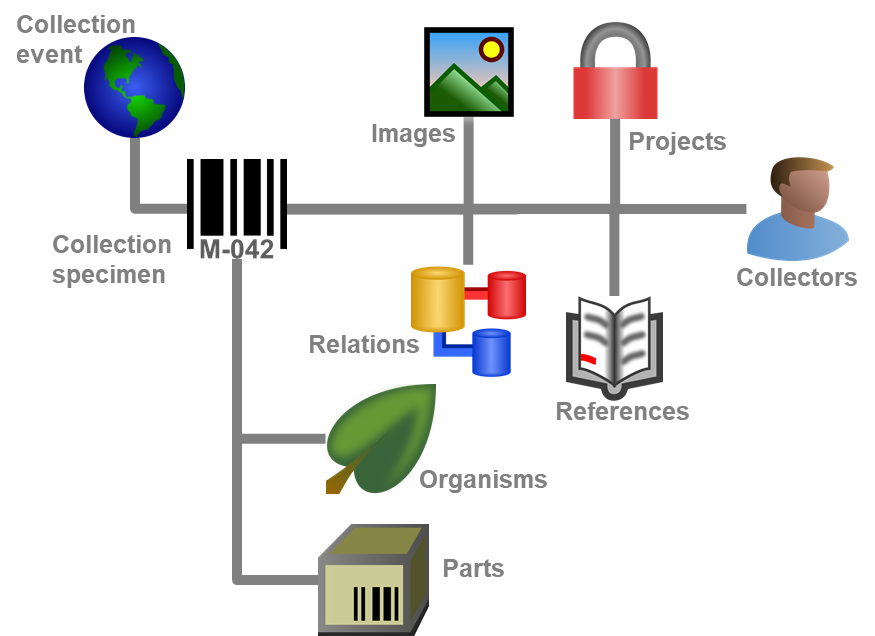Diversity Collection
Specimens
Main sectors
The image below gives you an overview of the main sectors related to the collectiom specimen.

Specimens are the entities stored in a collection. For handling the data
use the appropriate buttons (new specimen 


The header of the main window shows some important parameters for the selected specimen. On the left side the accession number is shown. In the center you find the last identification of the main IdentificationUnit according to the display order. The [http:/] link shows the public address of the selected item. Click on it to see the public available values. The next field shows the internal IDs (field CollectionSpecimenID in table CollectionSpecimen and CollectionEventID in table CollectionEvent) and the Versions for the specimen and the CollectionEvent. For details about the version of a data set see the Version topic. The availability of a specimen can be changed by entering an appropriate reason in the field Withholding reason.

If the specimen is a type, the header will show the type state and the identification connected with the type (see below).

To inspect the history of a specimen click on the 
Top area
In the header menu you can determine what is shown in the upper part of
the window. Choose on of the options: 





The tiny buttons in the upper right corner provide a shortcut to the
image displays and indicate the existence of images by a yellow
background  .
.
The data are stored in the table CollectionSpecimen .
